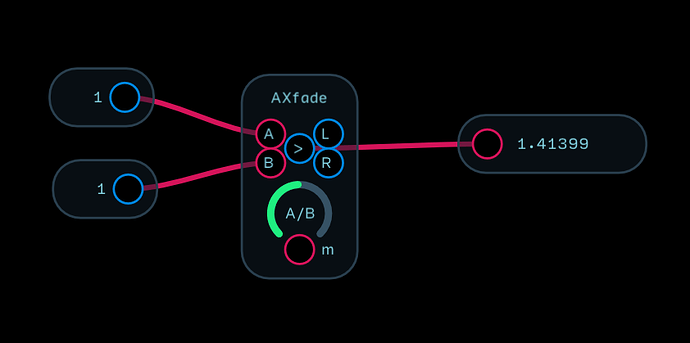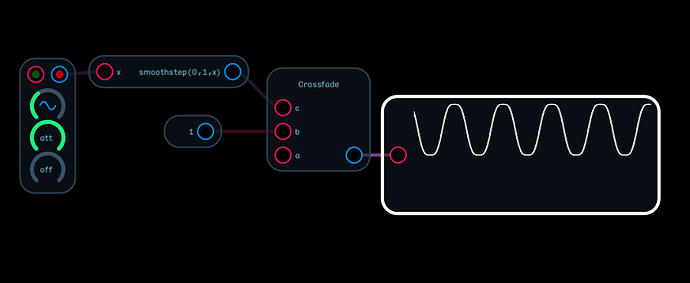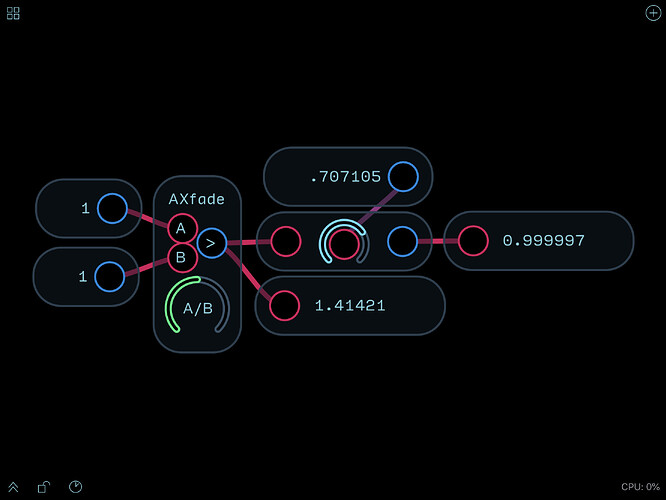(This is a repost of part of a thread on the old forum.)
While taking a look at the difference between the Epoch Modular TwinPeak filter and the one that Rob Hordijk uses in his own system, I got curious about his Dual Fader module. At first I thought that it might not be all that relevant in the Audulus context, but the closer I looked, the more compelling I began to find it.
The NOVARS Research Centre has fortunately posted an extensive series of Hordijk tutorials (presented by the man himself) and I found it very useful to take a look at the two videos (#12 and #12a) in which he presents the Dual Fader.
My first take-away was the simple idea of using one half of a cross-fader as a VCA with an RMS curve, and so I put together a little Audulus VCA and a comparison patch with exponential and logarithmic curves.

RM RMS VCA.audulus (10.4 KB)
RM VCA Shapes.audulus (58.3 KB)
A few details on Rob Hordijk’s Dual Fader and my recreation of it:
The http://hordijk-synths.info site still appears to be down, but is fortunately still available via the Web Archive. There’s also a schematic.
Hordijk makes clever use of normalized inputs and outputs to achieve a wide range of possibilities with only a few inputs and outputs:
- Crossfading: 2 input signals, 1 output signal
- Panning: 1 input signal, 2 output signals
- Ducking: 2 input signals, 2 output signals
Since normalized inputs and outputs aren’t (yet) a viable possibility in Audulus I’ve simply included an extra output for the crossfaded signals. Another feature of Hordijk’s module is a 20db Gain control on two of the inputs to enable using external signals within the modular system. That isn’t something that needs to be thought of within the Audulus context, but those controls can also be used to introduce clipping distortion, so I’ve kept that as a feature. (Soft clipping in my case, but that could be adjusted.)
Hordijk also includes a switch that changes between the crossfade output of channel A being routed to:
- Both inputs of channel B
- Only input 1 of channel B
- Both inputs of channel B, but with input 2 inverted. That means that when fader B is set precisely to its center, the two signals cancel each other out resulting in silence. However if that fader is modulated at audio rates a type of Ring Modulation is heard, with a particular quality that is the result of the RMS curves.
I put together a simple demo (which also got me thinking of the similarities with @stschoen’s FSK oscillator.): RM Dual Fader Demo.audulus (148.6 KB)
(My 3 way switch defaults to the upper position when opening the patch, so that need to be manually switched down to the lower position.)

And a demo coupled with the TwinPeak filter: RH-RM DualFader TwinPeak Demo.audulus (397.5 KB)
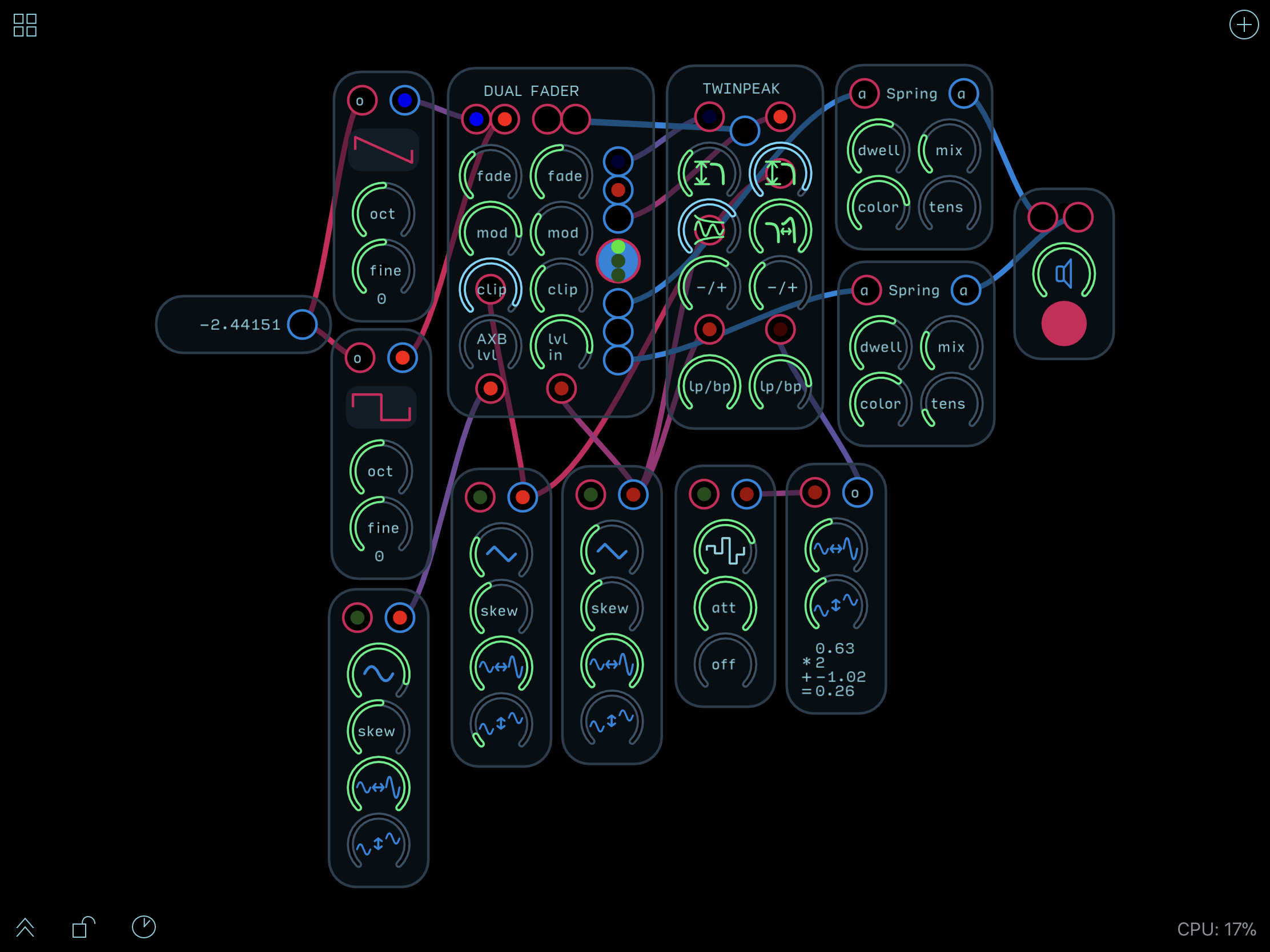
I’m impressed by Hordijk’s take on a simple mixing module, both the way in which distinctions between levels and placement are eased, and just how much can be gotten out of what is essentially two crossfaders – especially when modulation is introduced.
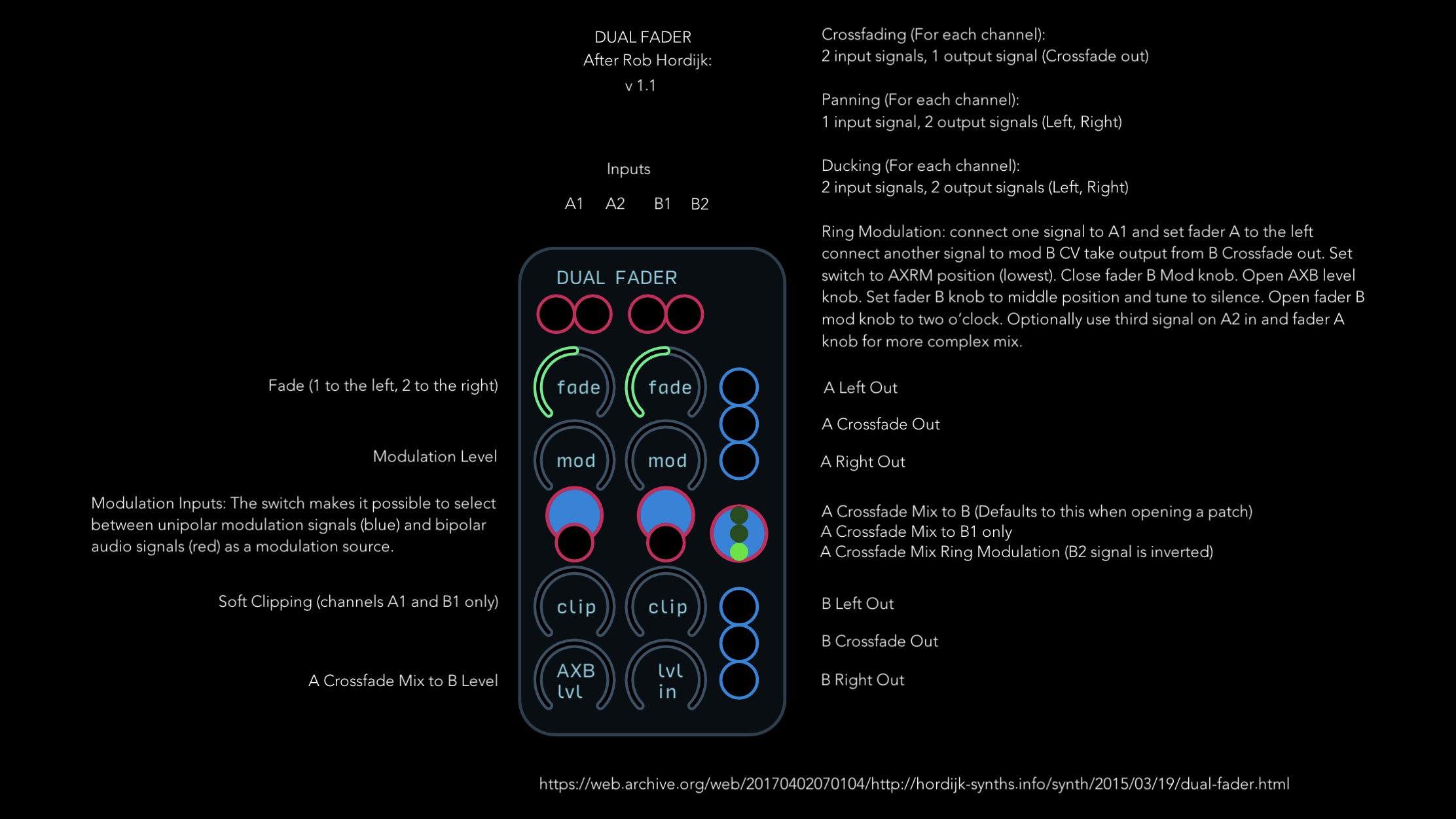
RH-RM Dual Fader v.1.1.audulus (70.7 KB)
(Hordijk’s modulation inputs accept both audio and modulation signals – in this case I’ve added a switch that makes it possible to select between unipolar modulation and bipolar audio signals for the modulation inputs.)
